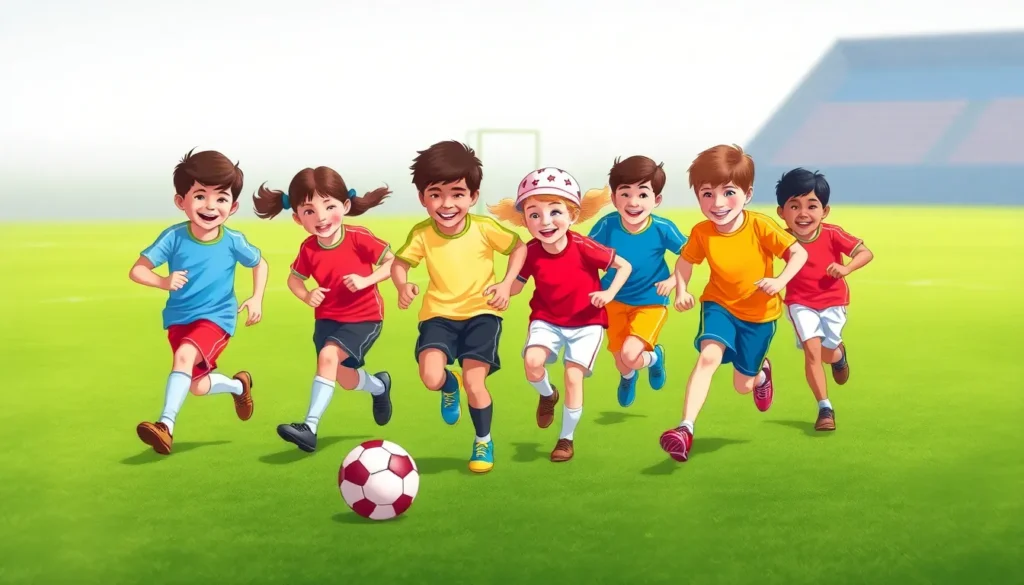Google Docs is a powerful tool for creating documents, but sometimes it feels like wrangling a cat when you just want to move an image around. Ever tried to drag a picture only to find it stubbornly glued to its original spot? You’re not alone! Many users have faced the frustrating challenge of getting their visuals to cooperate.
Table of Contents
ToggleUnderstanding Google Docs Image Features
Google Docs provides various features for inserting and manipulating images, making the process smoother. Users can adapt images for their documents seamlessly.
Inserting Images
To insert images, users can access the “Insert” menu. From there, selecting “Image” presents several options. One can upload images from the computer, use a URL, or select from Google Drive. Dragging and dropping images directly into the document is also supported, offering convenience. After insertion, images appear in the document, ready for adjustment.
Image Formats Supported
Google Docs supports several image formats including JPEG, PNG, and GIF. JPEG formats often cater to photographs and detailed images. PNG formats excel in supporting transparent backgrounds, making them suitable for logos. GIF formats, while limited to animations, add a dynamic flair to presentations. Utilizing these formats ensures images display optimally in documents.
How to Move Image Around in Google Docs
Manipulating images in Google Docs involves straightforward methods. Users often seek effective ways to position images to suit their document needs.
Using Drag and Drop Method
Dragging and dropping allows for quick image placement in Google Docs. Users can select an image file from their desktop and simply drag it into the document. After dropping, the image appears in the current cursor position. This method is particularly useful for fast editing workflows. Users can reposition the image after inserting it. Clicking and dragging the image adjusts its location easily.
Adjusting Image Positioning
Positioning images in Google Docs requires utilizing the image options available. Clicking on the image brings up a toolbar with alignment choices. Users can choose options like “In line with text” or “Wrap text” for versatile placement. Dragging the image to the desired spot enhances control over layout. Text can flow around the image based on the selected wrapping style. Additionally, resizing the image can also change how it interacts with text. Selecting handles at the image corners offers resizing capabilities.
Advanced Techniques for Image Manipulation
Image manipulation in Google Docs offers several advanced techniques. These methods enhance layout flexibility and visual appeal.
Wrapping Text Around Images
Wrapping text around images enhances document aesthetics. Users can select different text wrapping styles, such as “Wrap text” or “Break text.” This functionality allows text to flow seamlessly around images, creating a more organized appearance. Adjustments can be made easily by clicking on the image and accessing the wrapping settings. Users then choose the preferred option, providing a unique look to their documents. This technique also improves readability, ensuring that images complement the text instead of disrupt it.
Using Image Options Menu
The Image Options menu provides various editing features. Accessing this menu is straightforward; users simply right-click on the image and select “Image options.” Within this menu, adjustments like brightness, contrast, and transparency are available. These settings let users enhance or change the images to fit their document’s theme. Users can also experiment with recoloring images, offering creative visual elements. Utilizing the Image Options menu effectively ensures images align with the document’s overall style and purpose.
Common Issues and Troubleshooting
Users may encounter obstacles when trying to move images in Google Docs. These problems often disrupt the workflow, causing frustration.
Images Not Moving
Images sometimes appear unresponsive in Google Docs. This issue can stem from incorrect placement settings. Users should ensure they select appropriate text wrapping styles. If “In line with text” is active, images remain stationary within the text’s alignment. Modifying the wrapping style to “Wrap text” or “Break text” helps in repositioning images freely. Users can also try clicking and dragging images again after adjusting these settings. If problems persist, refreshing the page or reopening the document often resolves the issue. Checking browser compatibility could provide further assistance, ensuring the smooth functioning of Google Docs.
Alignment Problems
Alignment challenges may arise when positioning images. Misalignment often results from competing text and images occupying the same space. Choosing the right wrapping option greatly influences alignment success. Adjusting image size can also create alignment issues by affecting how text flows around them. Users can leverage the alignment toolbar to center or align images precisely. Alternative adjustments include using the “Image Options” menu to tweak placement settings for optimal results. Determining the best layout requires frequent trial and error to achieve a professional appearance.
Mastering image manipulation in Google Docs can significantly enhance document presentation. By utilizing the various insertion methods and positioning options available users can create visually appealing layouts that effectively communicate their message. Understanding text wrapping styles and the Image Options menu empowers users to customize their documents further ensuring that images align seamlessly with the overall design.
Troubleshooting issues like unresponsive images is part of the learning curve. By experimenting with different settings and alignment tools users can refine their skills and achieve a polished look. With practice moving images in Google Docs becomes less of a challenge and more of an opportunity for creative expression.









